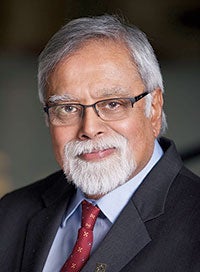Working together to meet pressing workforce needs
Published 5:55 am Tuesday, January 15, 2019
By Devinder Malhotra
Chancellor, Minnesota State
All across the nation, legislators and employers alike are concerned about a shortage of qualified workers. A number of factors are at play in this, including a low unemployment rate, a decreasing pool of high school graduates, a shift in population from rural areas to the Twin Cities metro, and a large wave of baby boomer retirements. Over ten years, the Minnesota economy will need to fill over one million jobs. Complicating an already difficult challenge, 74 percent of those jobs will require postsecondary education.

Devinder Malhotra
Minnesota State shares the concerns about this shortage and is partnering with the legislature, business, and industry to ensure that Minnesota has the talent it needs to sustain its economic vitality.
This was the topic of a workforce conversation in Austin in during a recent visit November 28 at Riverland Community College’s Austin Campus in the West Building. The discussion was hosted by Riverland Community College and President Adenuga Atewologun. Speakers included Sonji Davis from Workforce Development, Austin Police Chief Brian Krueger, and Austin Fire Chief Jim McCoy.
As I reflect on the conversation, this much is clear: in communities across the state, Minnesota State plays a critical role in solving the workforce shortage because our colleges and universities are engaging in two critical strategies: leveraging the strength that exists in the system and fostering strong partnerships with the K-12 sector, business, and industry. Brian Krueger shared that 40 percent of the Austin police force has come from Riverland’s law enforcement program. Similarly, Jim McCoy said many firefighters in the southern regions of Minnesota utilize Riverland for instruction relating to EMS/fire needs.
Our state colleges and universities work with each other to serve student and workforce needs in a number of ways: Students who complete specific associate degrees at a Minnesota State college can transfer to a Minnesota State university to earn a bachelor’s degree without losing credits or taking extra courses. Collaborative campus and regional planning enhances access to educational opportunities and reduces costs to students and taxpayers. We are pooling our portfolio of non-credit programs into regional enterprises that deliver continuing education, customized training, and consultative solutions that better meet the needs of businesses and incumbent workers. By partnering on these initiatives, each Minnesota State college or university provides a door through which business and industry can access the strengths of all 37 colleges and universities across Minnesota.
Our partnerships with K-12 allow us to accomplish even more. We work with schools to offer Post-Secondary Enrollment Options (PSEO) that allow students to earn college credit while still in high school, and we offer a variety of summer camps and outreach programs, such as the VEX Robotics program in Albert Lea that get middle and high school students excited about career opportunities they may not have considered previously. In addition, we work with Adult Basic Education and community-based training organizations to help ensure students are ready for college-level work. Currently, Riverland offers concurrent programming with more than 20 high schools allowing students to take high school and college credits simultaneously.
At our roundtable, I was especially pleased to see participation from so many strategic partners of Riverland. In addition to the public safety and workforce development leaders mentioned above, Superintendents Paul Besel of Grand Meadow, Joe Brown of Fairmont, and David Krenz of Austin all provided challenges to connect high schools and the colleges and universities of Minnesota State. Besel challenged us to provide more college recruiters for the community and schools to help upcoming students understand careers that might not even be created yet. He said students need to see the programs to understand what they are. David Krenz explained we need to look at education differently and rethink the school calendar. He mentioned the Austin School District’s partnership with Riverland and Winona State University to grow tomorrow’s teachers with two years at Riverland and two years at Winona, all offered on the Austin High School campus to give students hands-on experience while they learn.
And finally, public/private partnerships are vital to our success. A good example is the Workforce Development Scholarships that were funded by the legislature and supplemented by private contributions from business and industry partners. These innovative partnerships, forged by our colleges and universities in each of their respective communities, provided hundreds of new scholarships for students enrolling in programs with high employer demand – such as advanced manufacturing, agriculture, healthcare, information technology, and public safety programs– and made higher education even more affordable within these high demand industries.
All of the partnerships showcased during our discussion are important to the success of the Austin, Albert Lea, and Owatonna communities, to the success of our students, and to our success as a system of public higher education. Fundamental to the success of all is our ability to adapt to the disruption that is affecting all sectors of the economy, including higher education. Building our capacity to adapt and become more creative, innovative, and entrepreneurial is a strategic priority for the colleges and universities of Minnesota State. States and communities that will thrive will continue these conversations and ensure opportunities for all.



